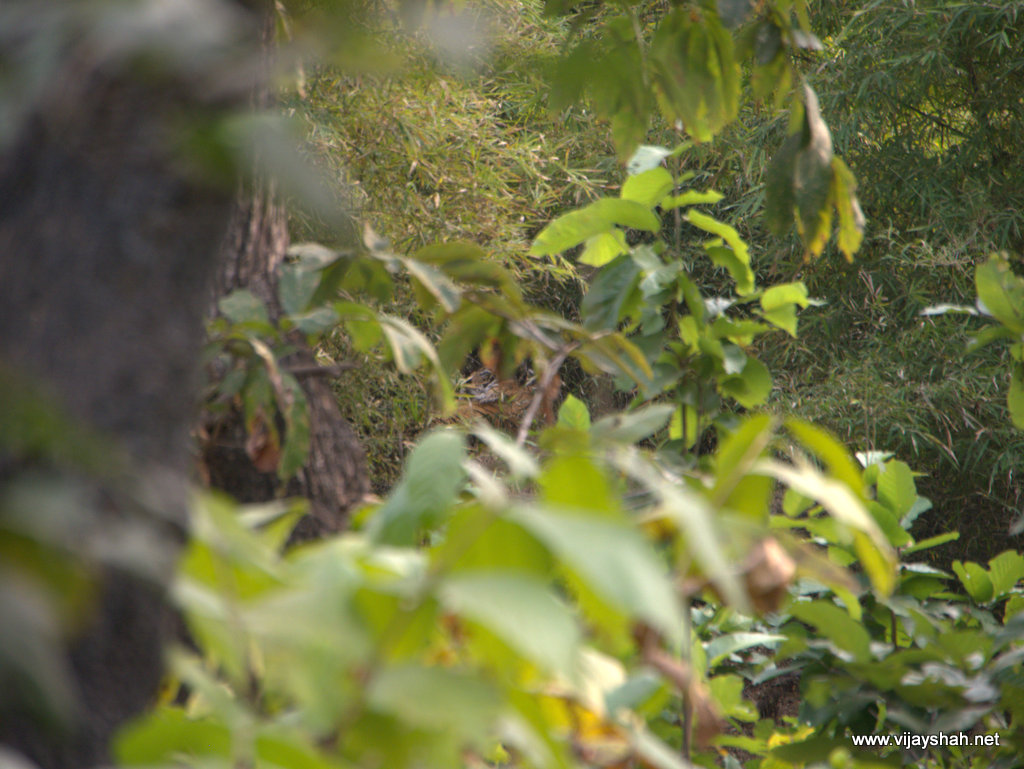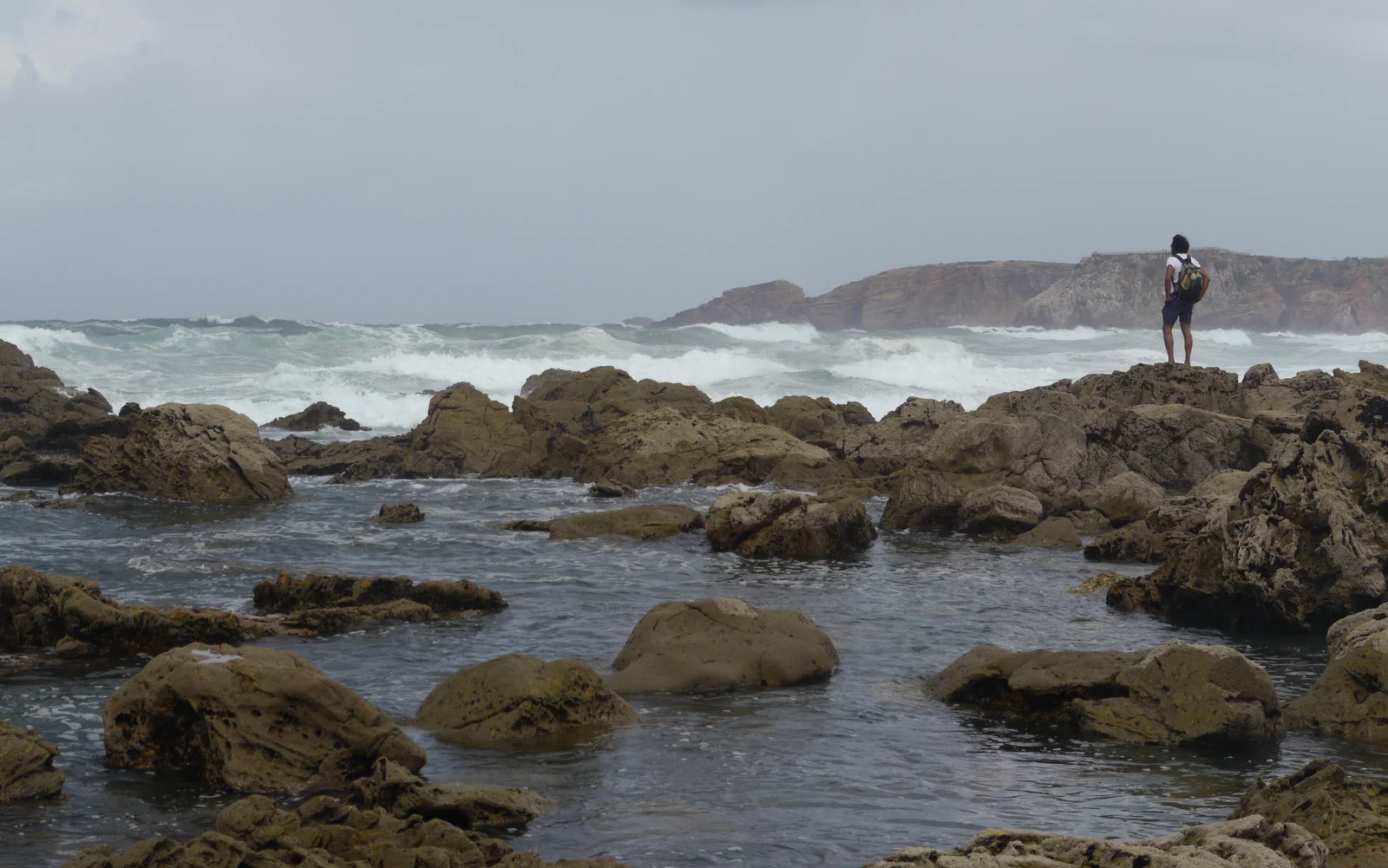The Wieliczka Salt Mine in Poland is one of the world's oldest salt mines and was in operation up until 2007. On Saturday night it was taken over by swing dancers for Dragon Swing 2014. This is alternative tourism at it's finest and one of the most surreal moments in my life.
The Murmurs of Jamnagar
**NEW VIDEO ONLINE**
The much awaited new video is finally here. This is a poetic piece about one of the most beautiful wonders of nature.
In the North Western Indian state of Gujarat there is a city that is covered in hundreds of species of birds. In the winter months it is also the scene of the most beautiful murmurations of Rosy Starlings that you could ever see. I spent six months travelling through India in 2012-13. During this time I had the most wonderful of experiences and saw the most incredible wildlife such as the birds of Jamnagar.
COLORADO INTERNATIONAL FILM FESTIVAL 2014
Received this wonderful star through the post this morning.
Broadcasting on the Community Channel Monday 8th September 10pm
A couple of my short films are to be broadcasted on the Community Channel on Monday 8th September 2014 at 10pm.
See the listings here:
http://www.communitychannel.org/schedule/20140908/
"Collecting two short films that delve into India's festival culture, we travel to the Kumbh Mela, 'the largest human gathering ever', before we visit the kite festival in Gujarat."
The Community Channel is on the following channels: Freeview 63 • Freeview HD 109 • Sky 539 • Virgin Media 233 • Freesat 651 • BBC iPlayer • TVPlayer • BT TV
I hope you get a chance to tune in!
A Special Lecture on Aeronautics (somewhere in the Zambian countryside)
**New short film online!**
In 2012 during another year's travelling I found myself in a small Zambian village with no electricity or running water. We were greeted with song and dance and countless smiling faces.
What could I do to give something back?
Authenticity in Travel
It’s authenticity that we have always been in search of: The search for ‘cool’, the declaration of ‘pretentiousness’ and the smirking at hipsters are all about our definition and acceptance of authenticity.
In the fast moving pace of urban western society this is a subjective minefield and the very search for authenticity, by definition, becomes the very opposite. But authenticity isn’t a modern trait and neither is it confined to the realms of western society. When we travel, I have noticed, we are continually searching for the ‘real’ country, authenticity it seems, consumes us even abroad. I have spent a lot of time thinking about what it means to be a real (authentic?) traveller. Is it in search for people, societies or cultures that have yet to be assimilated into the fold of the mono-cultural, homogeneous society that we are converging into? A lot of people I met would agree with this, they would argue that that is to experience the ‘real’ country; an ‘authentic experience’. To be honest with myself, this was something that attracted me to travel too. The farther away these societies are from our own, the greater these differences, means the greater our awe, the more we’re entertained and quite possibly, more we learn. But is the search for this authentic? I might’ve been in agreement with this question in the past, but now I would disagree. To be a real traveller is to see what is there, without any preconceived notions or ideas of what to find. As soon as we are in search for something we are no longer open to other experiences, to other ideas, we have already narrowed our mind and by that we are no longer seeing the ‘real’ country, blind to the reality that is before our eyes – whatever it may be. That is how I define the difference between travelling and tourism, it’s a mindset, and is brilliantly phrased by G. K. Chesterton with his quote ‘The traveller sees what he sees, the tourist sees what he has come to see.’
This is not to put down tourism or to revere travel. Sometimes when on a trip I grow tired of ‘travelling’ and I become a tourist for a few days/weeks, deciding what I’m seeing beforehand. In doing so I might learn more intellectually, satisfy a curiosity and quite frankly have a far more enjoyable time, but none of these lessons cuts as deep as that of an experiential learning that comes from experiencing the world from a traveller’s perspective. During my trips I am both a traveller and a tourist, the former being the real work which is often tiring and the latter being, in a way, a type of rest and relaxation.
Authenticity in travel is not thus defining oneself as a traveller as opposed to a tourist, but is, in fact, just the same as authenticity in every aspect of life – It is to be true to oneself.
The Kite Cutter
The kite festival in Ahmadabad, Gujarat, India is one of the most eagerly anticipated festivals of the year. Millions of kites are flown over the two day festival. This video follows Deepak Banjara, a local kite enthusiast as he celebrates this festival in 2013.
Film:
Ahmadabad, Gujarat, India. Filmed by Vijay Shah
What did you do today?
Sorry for all the wait, but there will be a little more waiting as there is so much footage I need to get through. But here's a little snippet of things to come...
Farewell India
The evolution of emotions on the last few days of a trip typically follows the same pattern. It starts of with excitement, following onto the planning stage, then as the flight date moves ever closer, melancholy sets in and finally weariness. The last stage can lead to some rash decisions being made and in these cases, expensive decisions (for which I am far too sensible to do).
It's hard to separate oneself from these emotions and tap into the endless inspiration that they can give to the writer. These emotions are a literary fountain but the plug is often sealed and the writer, weighed down with weariness does not having the strength to pull. I don't have the strength to pull even though this time I told myself it would be different. Alas all I have left is a trickle from this fountain.
I have survived India, pretty much unscathed. I have no terrible stories to tell but hell do I have some exciting ones. I said once that India confused me into silence, that was at the beginning of the trip, the beginning of a journey. This has been a journey of discovery more than of the usual sort; discovering not only my ancestral past, but my own past, answering questions I have had since childhood. And in this respect India does not disappoint. Yet it is not India that has done the work. India is, just as a mountain is. The beauty in the poetry etched out from mountaineers has come from within, squeezed out by their experiences and hardships on the mountain and that is what India does to the traveller. I have expressed some of these profound moments in photos and texts, others remain tucked away in my diary but the vast majority remain within me, dissipating slowly into the ether with time.
Now as I sit in Indira Gandhi International Airport in Delhi and my laptop battery slowly dies I bid farewell to India and prepare to be transported into a different dimension and time. I hope some of the lessons I have learnt stay with me. Tolerance. Patience. Impermanence.
Wedding Crashers
Like the side alleys of main shopping streets, the valleys off of the main touristed routes in the Indian Himalayas remain innoncent of the humdrums of mass tourist transport. A refreshing breath of crisp mountain air after the stale smell of towns competing for the tourist dollar and offering not much else. And like the side alleys off of the main shopping streets they are actually very easy to get to. Welcome to Chamba Valley.
As we walked into the village of Kugti at 2600m which clings to side of a steep gorge we had actually stumbled into the middle of a great wedding celebration. During the celebrations the organisers feed the entire village. It goes without saying and a true testament to the hospitality of the mountain follk that we were immediately asked to sit and that we MUST eat with them. Rice and curries were piled onto our thin throw away plates in such frequency and quantities that had we not insisted for them to stop the mountain of rice would have been higher than the 6000m snow capped peaks towering all around us.
Another adventure awaited us that evening when we left to climb up to the 3000m Hindu temple that was meant to be open and well supplied for cold and weary travellers needing a place to sleep and another wedding we ended up in the following day... but that story is for another time.
Self Immolation
Yesterday I joined a candle light vigil in memory of two monks who self immolated the day before (24th April). The two young monks, both in their twenties, died at the scene from their injuries. Since 2009, as many as 117 Tibetans living under China's rule have set themselves on fire demanding freedom and the return of His Holiness the Dalai Lama from exile. McLeod Ganj, India, the home of the Dalai Lama and the Tibetan Government in exile is probably the the only place that such a large gathering of Tibetans can happen without fear of oppression to pray for the fallen and protest against the Chinese occupation of Tibet.
We met at the main square at 6pm and walked around the city with candles singing prayers before ending up at the Tsuglagkhang Temple (residence of the Dalai Lama) where more prayers were sung and commemoration was given to the two young monks.
It was impossible not to sympathise with the dispair amongst the Tibetans. They are not just fighting against an all powerful overlord but an increasingly indifferent international community
I will let these few photos that I took (with my broken camera) speak the words.
More information on the Free Tibet movement and how you can participate at (www.freetibet.org).
Where are you from?
How can such a simple question lead to such trauma? Not other people's trauma, but my trauma, trauma to my well being. There are several answers I could give, each one correct yet wrong. Taking the question literally I would answer, London, UK. That is where I was born and raised, home for the first eighteen years of my life. But the question is never just simply asking that, it is asking a lot more. Locked away in that small question are numerous questions all being asked at the same time: Where do you live? What is your background? What culture are you from? Tenuously it is even asking 'what languages do you speak?'
Answering London, UK as I normally do leads to much more misinformation than answers. Each encounter other than the most briefest of meetings inevitably ends up in a long monologue qualifying my answer giving my whole history right back to where my grandparents are from to answer that small, simple question. In the end I actually end up disqualifying my own answer.
The monologue starts with the geographical location of my birth: London, UK. Then the fun begins... 'I was born and raised in London, UK in a predominantly Indian culture smattered with some East African and an ever increasing chunk of English-ness. My parents are from Kenya and my grandparents (all of them) are from Gujarat, India. I spent the first eighteen years (about 60%) of my life in London. Due to university and work the following 20% was spent dotted around the UK (one has to differentiate London from the rest of the UK because for all intents and purposes London may as well be a separate country). 10% of my life has been spent travelling and expeditioning around the world and 10% has been in France. The answer to where I am now living? 'Nowhere'.
But no one wants a long answer to that question. What is the short answer? I don't know. The dilemma! The trauma! Maybe the only short, truthful answer I can give is exactly that: 'I don't know'. Oh, but then more times than not I would be dubbed as a pretentious 'new-found-hippie-child-of-the-world'. Any ideas?
Answers on a post(card) please...
Welcome to Backpackerstan
Backpackerstan. I love this term. I'm not sure where it originated from but it describes some places perfectly. The name invokes something exotic and edgy yet with all the fluffiness and comfort of 'back home' - a one word oxymoron. One of these places is Mcleod Ganj where I have just arrived. If I had done some research I would not have been so surprised at arriving here. But as it is I hadn't and all I knew was that this was the seat of the Tibetan Government in exile, home of the Dalai Lama and most important for me where the Vipassana centre is located where I am due to start a ten day silent meditation course. It is fascinating how each of these independent travellers, bent of discovering somethng 'new', something 'real', contributed to the creation of a Backpackerstan. Probably the very thing they were trying to avoid. It is also fascinating how such a place is created in the first place: A trickle of early explorers/travellers discovers a place, a community that accepts them, allowing them to live amongst them, cheaply and with some spiritual or environmental depth. These travellers tell their friends about this place and as the word is passed around the traveller grapevine the trickle turns into a stream. The path becomes troddenand soon enough the guidebooks get hold of it, as it is their job to do. The stream turns into a river as more laid back, less hardy travellers arrive. Businesses emerge catering for thier needs: Toilet roll, biscuits, crisps and beer. Inevitabely, the chocolate banana pancake is served and once the trance parties start the transformation is complete.
But the Backpackerstans of the world are not all the same and they are not necessarily a sell out to the 'true' traveller. There is a real reason why the place became a Backpackerstan in the first place it's not all coincidence.
Mcleod Ganj's allure is twofold. It lies at just below 2000m in the Indian Himalayas. The beauty of the Himalayan valleus topped by 6000m snow capped peaks and a temperate climate make it a haven from the rest of India. But more importantly (for the creation of a Backpackerstan) it is the home of the Tibetan government in exile and the home of the highest spiritual leader in Buddhism , the Dalai Lama. The popularity of Buddhism amongst western travellers need not be stated and they originally came here for the chance to commune with the great leader. In the streets of Mcleod Ganj, marron robed buddhist monks and Tibetan clothed westerners dot the streets in equal numbers amongst the more western dressed Tibetan and Indian residents. In the background in a plethora of signage restuarants claiming they make the best pizzas in town and guest houses delcaring the best and cheapest rooms vie for business. This is not how the town would've evolved without the backpackers. But it would be wrong also to attribute all the changes of Mcleod Ganj to backpackers. The seat of the Dalai Lama and the beautiful mountain scenery makes it a destination also for the more traditional tourist, foreign and Indian alike as well as a pilgrimage for Buddhists the world over. They too have affected the evolution of the town considerably and many businesses cater for their needs instead: Shops selling expensive Buddhist and Tibetan trinkets, statues and singing bowls line the streets leading to the main temple. However although these tourists have had some affect on the town and the numbers of Indian tourists alone easily outnumber the other type of tourists it is the backpackers that stay long term and have made the biggest differences here.
Once a Backpackerstan is born there is no going back. The culture of the place changes, the young , influenced by their western (richer) visitors fuse their culture with their own to create a hybrid culture sometimes combining the best of both cultures, often combining the worst. But that does not make travellers bad or irresponsible. It would be dishonest to the host for the traveller to pretend to be something they are not in order to prevent cultural changes. That is social engineering in itself. Cultures change all the time, influenced by everything they come in contact with. The fusion of cultures and it's evolution, happening faster here than other places is fascinating to watch.
A message for those that spurn such environments looking for the 'real' India, stop looking and start seeing because this is as real as anything else. Welcome to Backpackerstan!
_uacct = "UA-3111569-2"; urchinTracker();
Andaman Islands: Week 2
Andaman Islands: Weeks 3-4
The Andaman Islands are the tropical paradise that they are made out to be. The fine, white, sandy, palm tree fringed beaches are heavenly and the sea a balmy 28 degrees. Although the archipelago consists of hundreds of islands only about 17 are accessible to tourists (without their own boat), Indian and foreigner alike. Geographically the islands are more south east Asia than India, anthropologically they are even further removed - the indigenous population are neither South East Asian nor Indian. Their language descends from a unique historical tree as well as their genealogy. Sadly the cat and mouse games played by the various super powers over the ages have rendered these populations insignificant and their numbers remain in decline. Recently attempts have been made to repair the damage that colonisation has wrecked on these populations and certain measures have been put into place: tourists can only travel to only a few islands, contact with indigenous populations is prohibited and so too is venturing into their territories. But as is often the case, these actions are too little and too late and the majority of the indigenous populations are on a downward slide. Just recently their was the much publiscised case of the last surviving member of the Bo tribe passing away, taking with her a 65000 year of language and history. Instead the main inhabitants of the islands these days are immigrants from the main land. Some have moved over as refugees, others as a deal with the government. These second and third generation immigrants provide all the businesses on the tourist islands. Although tourist numbers are increasing, it is still fairly easy to find a piece of paradise for yourself. :-)
Andamans... Week 1
Let's let the photos do the talking... More photos at: Andamans
The Present of Travelling
Kumbh Mela 2013
Varanasi: First Look
Varanasi is, in a nutshell, a great big cauldron of excrement and faith. People's devotion and the colours, though, make this a photographers dream and never before have I seen so many dreadlocks and extremely expensive cameras in one place. More pictures at:
http://www.evelyn-vijay.blogspot.in/2013/02/varanasi-first-look.html
Finding Richard Parker

Tigers are extremely elusive, preferring the dense foliage of the forest to any open space where we could spot them from. But this tiger, in his charity offered us a little spy window through the trees where we could just make out his stripes - his camoflage failing - but only if one knows specifically where to look. He was pretty far off and all I could really see were some stripes in the forest which, to be honest, weren't so impressive. But then when the elephant trackers went too close he let out a tremendous roar that reverberated throughout the jungle and struck deep down into my core; rattling my bones and sending my soul cowering into a dark corner. This is without doubt the most impressive sound I have ever heard!





